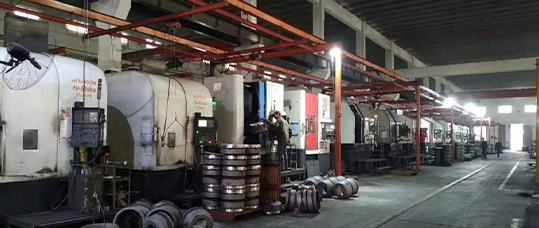
-
 Afrikaans
Afrikaans -
 Albanian
Albanian -
 Amharic
Amharic -
 Arabic
Arabic -
 Armenian
Armenian -
 Azerbaijani
Azerbaijani -
 Basque
Basque -
 Belarusian
Belarusian -
 Bengali
Bengali -
 Bosnian
Bosnian -
 Bulgarian
Bulgarian -
 Catalan
Catalan -
 Cebuano
Cebuano -
 Corsican
Corsican -
 Croatian
Croatian -
 Czech
Czech -
 Danish
Danish -
 Dutch
Dutch -
 ಆಂಗ್ಲ
ಆಂಗ್ಲ -
 Esperanto
Esperanto -
 Estonian
Estonian -
 Finnish
Finnish -
 French
French -
 Frisian
Frisian -
 Galician
Galician -
 Georgian
Georgian -
 German
German -
 Greek
Greek -
 Gujarati
Gujarati -
 Haitian Creole
Haitian Creole -
 hausa
hausa -
 hawaiian
hawaiian -
 Hebrew
Hebrew -
 Hindi
Hindi -
 Miao
Miao -
 Hungarian
Hungarian -
 Icelandic
Icelandic -
 igbo
igbo -
 Indonesian
Indonesian -
 irish
irish -
 Italian
Italian -
 Japanese
Japanese -
 Javanese
Javanese -
 Kannada
Kannada -
 kazakh
kazakh -
 Khmer
Khmer -
 Rwandese
Rwandese -
 Korean
Korean -
 Kurdish
Kurdish -
 Kyrgyz
Kyrgyz -
 Lao
Lao -
 Latin
Latin -
 Latvian
Latvian -
 Lithuanian
Lithuanian -
 Luxembourgish
Luxembourgish -
 Macedonian
Macedonian -
 Malgashi
Malgashi -
 Malay
Malay -
 Malayalam
Malayalam -
 Maltese
Maltese -
 Maori
Maori -
 Marathi
Marathi -
 Mongolian
Mongolian -
 Myanmar
Myanmar -
 Nepali
Nepali -
 Norwegian
Norwegian -
 Norwegian
Norwegian -
 Occitan
Occitan -
 Pashto
Pashto -
 Persian
Persian -
 Polish
Polish -
 Portuguese
Portuguese -
 Punjabi
Punjabi -
 Romanian
Romanian -
 Russian
Russian -
 Samoan
Samoan -
 Scottish Gaelic
Scottish Gaelic -
 Serbian
Serbian -
 Sesotho
Sesotho -
 Shona
Shona -
 Sindhi
Sindhi -
 Sinhala
Sinhala -
 Slovak
Slovak -
 Slovenian
Slovenian -
 Somali
Somali -
 Spanish
Spanish -
 Sundanese
Sundanese -
 Swahili
Swahili -
 Swedish
Swedish -
 Tagalog
Tagalog -
 Tajik
Tajik -
 Tamil
Tamil -
 Tatar
Tatar -
 Telugu
Telugu -
 Thai
Thai -
 Turkish
Turkish -
 Turkmen
Turkmen -
 Ukrainian
Ukrainian -
 Urdu
Urdu -
 Uighur
Uighur -
 Uzbek
Uzbek -
 Vietnamese
Vietnamese -
 Welsh
Welsh -
 Bantu
Bantu -
 Yiddish
Yiddish -
 Yoruba
Yoruba -
 Zulu
Zulu
Transitioning from Drum Brakes to Disk Brakes
Transition from Drum Brakes to Disc Brakes A Modern Upgrade in Automotive Safety
The evolution of automotive braking systems has been a pivotal advancement in vehicle safety and performance. Among the notable transformations in this realm is the transition from drum brakes to disc brakes. This shift not only reflects technological progress but also enhances the efficiency and reliability of vehicle braking systems.
Historically, drum brakes were the standard choice for many vehicles, especially in the mid-20th century. They operate by using friction caused by brake shoes that press against the inner surface of a rotating drum. While effective, drum brakes have several limitations, particularly concerning heat dissipation and braking performance under extreme conditions. When brakes are applied repeatedly, they generate heat, which can lead to brake fade—a reduction in stopping power that compromises safety.
Transition from Drum Brakes to Disc Brakes A Modern Upgrade in Automotive Safety
One of the most significant advantages of disc brakes is their ability to perform effectively in wet conditions. Drum brakes can retain water, leading to diminished effectiveness until they dry. Disc brakes, on the other hand, are more exposed to air and clear water away quickly during operation, ensuring reliable braking performance in adverse weather.
drum brakes to disk brakes

Furthermore, the design and layout of disc brakes allow for easier maintenance and inspection. Changing brake pads on a disc brake system is generally simpler and less time-consuming than the maintenance required for drum brakes. As a result, many modern vehicles are equipped with disc brakes not only on the front wheels but also on the rear, a decision that mirrors the increasing emphasis on safety and performance in automotive design.
In addition to enhancing safety and performance, disc brakes have become synonymous with technological sophistication and modernity. Their sleek, visible design often contributes to the overall aesthetics of a vehicle, appealing to consumers who value both form and function. As manufacturers continue to invest in research and development, we are likely to see further innovations in brake technology, including advanced materials and integrated electronic systems that enhance braking performance even further.
The transition from drum brakes to disc brakes represents a broader shift in the automotive industry towards improved safety standards and driving experiences. As vehicles become faster, more powerful, and heavier, the demand for effective braking systems has never been greater. By embracing disc brake technology, manufacturers are ensuring that drivers enjoy a safer, more responsive, and more enjoyable ride.
In conclusion, the move from drum brakes to disc brakes marks an important chapter in automotive history, providing benefits that resonate with performance, safety, and ease of maintenance. As we look to the future, the evolution of braking systems will continue to reflect the industry's commitment to innovation and excellence.
-
Rear Drum Brakes Maintenance Tipsಸುದ್ದಿAug.04,2025
-
Key Components Affecting Brake Drum Functionಸುದ್ದಿAug.04,2025
-
Important Inspection for Truck Drum Brakeಸುದ್ದಿAug.04,2025
-
How to Prepare for Changing Rear Drum Brakesಸುದ್ದಿAug.04,2025
-
Essential Tools for Cleaning Drum Brakes Properlyಸುದ್ದಿAug.04,2025
-
Brake Drum Function Guideಸುದ್ದಿAug.04,2025
-
Safety Features of Red Brake Drumsಸುದ್ದಿAug.01,2025
